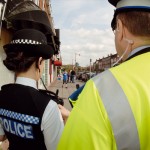 Motorists who get behind the wheel after taking drugs are to be targeted in a new road safety crackdown across Surrey and Sussex.
Motorists who get behind the wheel after taking drugs are to be targeted in a new road safety crackdown across Surrey and Sussex.
Legislation that comes into force on 2 March sets legal limits for how much of a substance - both illegal drugs and prescription medication - motorists can have in their system while driving.
A new device has also been approved that will allow officers at the roadside to test if a motorist has taken cannabis or cocaine. The DrugWipe system allows officers to determine in less than 10 minutes whether motorists have the illegal substances in their body, using a swab from inside a driver’s cheek.
Officers no longer need to prove that a motorist is fit to drive – just that the motorist has an illegal level of drugs in their system while driving.
Any drivers who fail the tests will be arrested and taken to a police station where they will be asked to consent to a sample of their blood being taken. That blood will then be sent away to be examined and if illegal levels of a drug are found, the motorist faces being prosecuted for drug-driving.
If the driver refuses to give consent, they face being prosecuted for the offence of failing to provide a sample of blood for analysis.
The change in the law is designed to make it quicker and easier for drug-drivers to be prosecuted - meaning more of the dangerous motorists can be removed from the streets.
Illegal drugs covered by the new rules include cannabis, cocaine, ecstasy, heroin and ketamine.
Medicinal drugs covered include diazepam, methadone and morphine. The limits for these drugs have been set after advice from a panel of medical experts, at the level where the substances begin to affect driving.
National statistics suggest one in six drivers who die in crashes in the UK have traces of illegal drugs in their systems - with many of them having taken both drink and drugs.
Motorists who have taken drugs can suffer from slower reaction times, an inability to concentrate, nausea, dizziness, fatigue, erratic and aggressive behaviour, hallucinations, panic attacks, paranoia and tremors.
A European study found that taking drugs increases the chance of you being involved in a serious or fatal crash by up to 10 times. Taking more than one drug or mixing drink and drugs can increase that chance by up to 30 times.
Inspector Stewart Goodwin, of Surrey and Sussex road policing unit, said:
“Drug-driving is a widespread but often hidden menace across the country. You don’t have to be on illegal drugs to be unfit to drive - many prescription or over-the-counter drugs can also impair your ability to drive.
“In the same way that we take a zero tolerance approach to drink-driving, we will also not tolerate drug-driving. Driving under the influence of drugs puts not just the offenders and their passengers at risk but everyone else on the roads as well.
“We have officers out every day looking for drug-drivers but we also need the public’s help to catch them and get them off the roads. If you know or suspect someone has taken drugs and is driving, please contact us urgently - it could save lives.”
Notes
In the UK it is an offence to drive while impaired by drugs. The police can stop any driver they suspect of driving whilst taking drugs or alcohol, to breathalyse them or test for drugs.
They may also test for alcohol or drugs if a driver is stopped for another offence, or if they are involved in a collision. A driver can be charged with driving while impaired by drugs whether the drugs are illegal or prescribed.
Drivers convicted of drug driving receive:
• a minimum 12-month driving ban
• a criminal record, and
• a fine of up to £5,000, or up to 6 months in prison, or both.
Current legislation only allows us to use technology that can detect the presence of cannabis in a driver’s system. If a driver has taken any other drug, there is no equipment that we can use to detect this so consequently we cannot measure how much of a substance they may have in their bloodstream.
We can test a driver’s reactions using basic tests at the side of the road to determine whether we believe they are under the influence of drugs and if they are in a fit condition to drive.
The police can test suspected drug drivers using a Field Impairment Test (FIT), which assesses levels of impairment by drink or drugs. The FIT includes checking the driver’s eyes to see the size of their pupils and how they react to light (various drugs affect pupil size and reaction in different ways), and tests for balance, coordination and judgement such as standing on one leg while counting out loud.
Drivers who fail the FIT can be arrested and taken to a police station for a blood or urine test to confirm if they’ve taken illegal drugs or medicines that can impair driving.
Because the police must prove the driver was impaired by drugs (rather than simply proving they have taken drugs), which can be complicated, prosecutions each year for drug driving are currently relatively low.



 Twitter
Twitter RSS
RSS